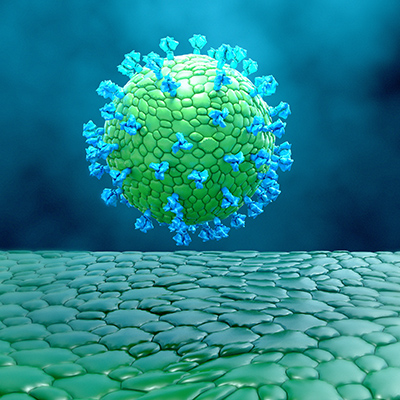January 19, 2021 -- A new method using synthetic chemistry can be a powerful tool for efficiently building adjuvanted protein-based subunit vaccines against a variety of infectious diseases. This process may help move desperately needed vaccines into preclinical evaluation quickly, according to research published in the Proceedings of the National Academy of Sciences on January 18.
Protein-based subunit vaccines, which contain only antigenic proteins from pathogens, are becoming an increasingly useful vaccine option for the prevention of various infectious diseases, including COVID-19. However, these vaccines often require adjuvants to activate recognition receptors on antigen-presenting cells in order to stimulate immune responses.
Traditionally, adjuvants are added as a mixture with the protein or bound to the antigen to generate self-adjuvanting vaccines, both of which require complex manufacture procedures.
"The challenge is to ensure that our immune cells see both the protein and adjuvant simultaneously," said author Anneliese Ashhurst, PhD, research fellow at the University of Sydney. "To overcome this difficulty, for the first time we have developed a method that synthesizes the protein with an attached adjuvant as a single molecule."
A major challenge in the manufacture of self-adjuvanting vaccines is the fusion of aqueous soluble protein with hydrophobic adjuvant molecules. The new methods developed by the Australian researchers used synthetic chemistry to ligate solid-phase protein fragments with adjuvants with a one-pot native chemical ligation deselenization reaction.
"We got around this problem of keeping hydrophobic and hydrophilic molecules together in a vaccine by developing a way to permanently bind the protein and adjuvant together as a single molecule using synthetic chemistry. Our approach overcomes the solubility problems faced by other methods," said Richard Payne, PhD, professor of organic chemistry and chemical biology at the University of Sydney.
The rapid method of creating self-adjuvanting vaccine constructs will enable researchers to develop a broad range of candidates for preclinical testing, in a time efficient manner. The team noted that the synthesis of an entire bacterial protein with an attached adjuvant has not previously been achieved.
Testing the approach for tuberculosis
"Tuberculosis infects 10 million and kills more than 1.4 million people every year," said Ashhurst. "Historically, it is the leading cause of death worldwide from a single infectious agent. So far, a tuberculosis vaccine that is highly effective and safe to use in all populations has eluded medical science."
Currently, the bacille Calmette-Guerin vaccine, a live-attenuated mycobacterium, is the only vaccine available against tuberculosis. It is effective in infants but has reduced effectiveness in adolescents and adults. The vaccine also has significant risks for immunocompromised individuals, especially those with HIVAIDS.
As an alternative strategy, the researchers used the new vaccine construct approach to generate synthetic self-adjuvanted protein vaccines against Mycobacterium tuberculosis. Two vaccine constructs were designed which included full-length ESAT6 protein fused to the toll-like receptor 2 (TLR2)-targeting adjuvants Pam2Cys-SK4 or Pam3Cys-SK4.
The constructs were administered as mucosal inhaled vaccines to mice in vivo. This was done to demonstrate their protective efficacy against virulent M. tuberculosis. The researchers found that the vaccines generated interleukin (IL)-17-producing CD4+ T cells specific for the ESAT6 antigen ad also stimulated substantial immunoglobulin G (IgG) and IgA responses in the blood and lung cavity. The team attributed the immune responses to activation of TLR2 in lungs which causes release of IL-1, tumor necrosis factor alpha (TNFα), and IL-6 that results in the recruitment of neutrophils and monocytes and activation of APCs, as well as strong T-cell helper 17 (Th17) responses.
Furthermore, when mice were challenged with a low-dose aerosol of M. tuberculosis six weeks after vaccination, mice that received the synthetic vaccine constructs had significantly lower bacterial loads than mice who did not receive a vaccine.
"As well as providing a rapid method to develop a range of vaccines for preclinical testing, we expect that this pulmonary vaccination approach will be particularly beneficial for protecting against respiratory diseases," explained Warwick Britton, professor emeritus at the University of Sydney. "We hope that an inhaled vaccine for tuberculosis using a protein-based immunization will allow us to develop a universal and safe approach to combatting this deadly disease."
Another major advantage with the synthetic method is that vaccines for a range of diseases can be developed rapidly and safely in the laboratory.
"We don't need to grow the actual pathogen in the lab to make the vaccine," said Ashhurst. "Using this new method, we can rapidly and safely synthesize highly pure vaccines in the lab and take them straight into animal models for preclinical testing."
Do you have a unique perspective on your research related to infectious diseases or immunology? Contact the editor today to learn more.
Copyright © 2021 scienceboard.net







